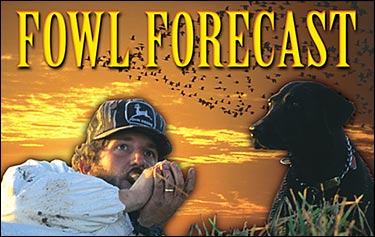
Expect a 'Goosed-Up' Season,
With Increased Limits
on Snows, Specks and Canadas
By Larry D. Hodge
Eagle Lake outfitter Clifton Tyler has his doubts about the impact of proposed changes in hunting methods on the snow goose overpopulation, but he thinks government regulators hit a home run when they upped the Eastern Zone daily bag limit on white fronted (specklebelly) geese to two. "The increased limit on specks will have a stronger impact than anything that's happened in the last 30 years," he says flatly. "Even more than the increased limit on snows." (Light goose limits statewide are now 20 per day, with no limit on possession. Western Zone hunters will have to continue to be satisfied with one specklebelly per day, but this year the limit on Canadas was upped to five.)
"Most hunters have prized that one speck," Tyler explains. "Many of the ones with lots of bars were mounted. Guides love specks, too, because they are generally available. They are not stupid birds, but they feel comfortable with just a few birds in a field, whereas snows and blues are not comfortable unless they have a thousand or more to sit with. So the specks spread out and are everywhere."
Their wide-ranging habit, plus their susceptibility to being decoyed, means that specks, which, like Canadas, are generally regarded as a bonus on a snow goose hunt, often wind up being the chief form of entertainment on an outing in the Texas rice country. Snow geese are so wary about coming to decoys and so adept at passing by just out of shooting range that hunting them is usually more an exercise in armed bird watching than in shooting. But every goose hunter soon learns to get ready to shoot when one or a half-dozen specks turn toward the spread. In comparison to snows, specks might well be called "kamikaze birds."
TPWD waterfowl biologist David Lobpries of Wharton agrees that the increased limit on specks is the best present Texas goose hunters could have received. "The new limit will greatly increase the harvest on specks," he says. "Commercial guides will like it too, because hunters will know they will get at least a couple of geese. And if that attracts more hunters, it could increase the harvest of snows, too."
An increased limit on Canadas in the Eastern Zone to three birds between Jan. 24-Feb. 1 is another bonus, though by then the season on specks will have expired.
continued
page 1 / page 2
| 
